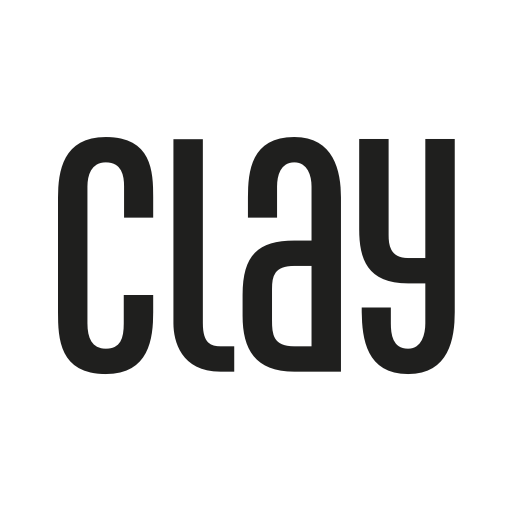In today’s rapidly evolving professional landscape, artificial intelligence tools like ChatGPT are becoming increasingly prevalent. While these tools offer immense potential for enhancing productivity and creativity, there’s a valid concern about maintaining authenticity and personal touch in our work. This guide will explore how to effectively leverage ChatGPT for professional growth while ensuring that your unique voice and expertise remain at the forefront.
Understanding ChatGPT’s Role in Professional Development
Before diving into strategies, let’s consider how ChatGPT can contribute to professional growth:
- Idea Generation: Sparking creativity and brainstorming.
- Research Assistance: Quickly gathering information on various topics.
- Writing Enhancement: Improving structure and clarity in written communications.
- Learning Tool: Explaining complex concepts and providing educational content.
- Productivity Boost: Automating routine writing tasks.
Key Strategies for Leveraging ChatGPT Authentically
1. Use ChatGPT as a Springboard, Not a Crutch
- Prompt for Ideas: Use ChatGPT to generate initial ideas or outlines.
- Refine with Your Expertise: Take ChatGPT’s output as a starting point and refine it with your unique insights and experience.
Example: When preparing a presentation, use ChatGPT to suggest potential topics or structures, then develop the content based on your personal experiences and knowledge.
2. Maintain Your Voice
- Edit for Authenticity: Always review and edit ChatGPT’s output to align with your personal or brand voice.
- Inject Personal Anecdotes: Supplement AI-generated content with your own stories and examples.
Example: If using ChatGPT to draft a blog post, make sure to infuse it with your unique perspective and industry-specific insights that only you can provide.
3. Leverage for Research and Learning
- Rapid Information Gathering: Use ChatGPT to quickly compile information on unfamiliar topics.
- Concept Explanation: Ask ChatGPT to explain complex ideas in simple terms to enhance your understanding.
Example: When entering a new field, use ChatGPT to get a broad overview and identify key areas for deeper, personal research.
4. Enhance, Don’t Replace, Human Interaction
- Preparation Tool: Use ChatGPT to prepare for meetings or networking events.
- Follow-Up Enhancement: Craft more thoughtful follow-up messages with AI assistance.
Example: Before a networking event, use ChatGPT to generate relevant industry questions, but rely on your interpersonal skills during the actual conversations.
5. Ethical Transparency
- Be Open About AI Use: When appropriate, disclose the use of AI tools in your work.
- Highlight Your Contributions: Clearly differentiate between AI-assisted and fully original content.
Example: In a project proposal, you might mention, “Initial research was conducted with AI assistance, but all strategies and recommendations are based on my professional experience and industry knowledge.”
6. Use for Skill Development
- Language Learning: Practice language skills by engaging with ChatGPT in different languages.
- Writing Improvement: Analyze ChatGPT’s writing structure and style to enhance your own skills.
Example: If you’re learning Spanish, have conversations with ChatGPT in Spanish and ask it to correct your mistakes.
7. Customize ChatGPT’s Knowledge
- Fine-tune with Specialized Information: Provide ChatGPT with specific data or guidelines relevant to your field.
- Create Custom Prompts: Develop prompts that align with your professional needs and style.
Example: Develop a set of prompts tailored to your industry, like “Analyze this market trend from the perspective of a [your specific role] with [X years] of experience.”
Best Practices for Maintaining Authenticity
- Critically Evaluate Output: Always fact-check and verify information provided by ChatGPT.
- Prioritize Original Thinking: Use ChatGPT to complement, not replace, your own analytical and creative processes.
- Regularly Reassess Usage: Periodically evaluate how you’re using ChatGPT and ensure it aligns with your professional growth goals.
- Balance AI and Human Input: Seek feedback and input from human colleagues and mentors alongside AI tools.
Leveraging ChatGPT with Other Professional Tools
Integrate ChatGPT usage with other professional development tools:
- Use Clay for Relationship Management:
- After using ChatGPT to prepare for networking events or meetings, use Clay to record key interactions and set follow-up reminders.
- Use insights from Clay about your professional contacts to create more personalized, ChatGPT-assisted communications.
- Learning Management Systems:
- Use ChatGPT to generate quizzes or study materials based on courses you’re taking.
- Project Management Tools:
- Integrate ChatGPT-generated ideas into your project planning software for brainstorming sessions.
ChatGPT in Different Professional Scenarios
Content Creation
- Use ChatGPT for outlining and research, but infuse the content with your unique insights and experiences.
Email Communication
- Let ChatGPT suggest email templates, but personalize them significantly before sending.
Presentation Preparation
- Use ChatGPT for initial slide ideas, but rely on your expertise for the main content and delivery.
Problem-Solving
- Brainstorm solutions with ChatGPT, but apply critical thinking and your professional judgment to select and implement the best approach.
Potential Pitfalls and How to Avoid Them
- Over-reliance:
- Pitfall: Depending too heavily on ChatGPT for decision-making.
- Solution: Use ChatGPT as a tool for idea generation, not final decisions.
- Loss of Creativity:
- Pitfall: Allowing ChatGPT to stifle your creative thinking.
- Solution: Use ChatGPT to overcome writer’s block, then let your creativity take over.
- Confidentiality Concerns:
- Pitfall: Sharing sensitive information with ChatGPT.
- Solution: Be cautious about the data you input and never share confidential information.
- Plagiarism Risks:
- Pitfall: Directly using ChatGPT’s output without proper attribution.
- Solution: Always thoroughly rework and personalize AI-generated content.
Future-Proofing Your AI Integration Strategy
As AI continues to evolve:
- Stay Informed: Keep up with the latest developments in AI and how they impact your field.
- Develop AI-Complementary Skills: Focus on skills that AI can’t replicate, like emotional intelligence and complex problem-solving.
- Embrace Continuous Learning: Use AI as a tool to facilitate ongoing professional education and skill development.
Conclusion
ChatGPT and similar AI tools offer exciting possibilities for professional growth, but the key to leveraging them effectively lies in maintaining your authenticity and unique value. By using ChatGPT as a complement to your skills and knowledge rather than a replacement, you can enhance your productivity, creativity, and learning without losing your professional identity.
Remember, the most successful professionals will be those who can skillfully blend AI assistance with their own expertise, creativity, and interpersonal skills. Use tools like Clay alongside ChatGPT to manage your professional relationships and ensure that your AI-enhanced work remains personalized and authentic.
As you integrate ChatGPT into your professional toolkit, continually reflect on how it’s impacting your work and growth. Strive for a balance that amplifies your abilities without overshadowing your unique professional voice. With thoughtful application, ChatGPT can be a powerful ally in your journey of professional development, helping you to work smarter, learn faster, and achieve more while remaining true to your authentic self.

